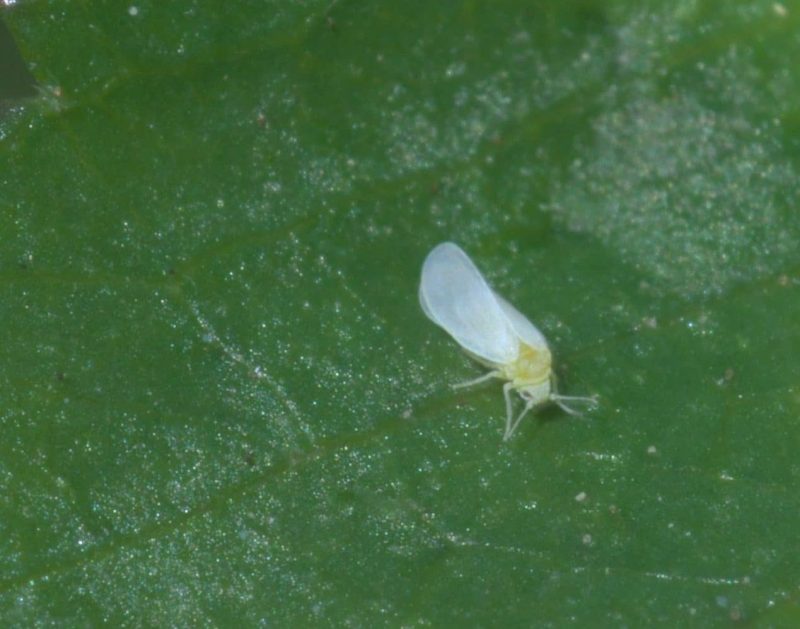So, how do you get rid of whiteflies? If you’re one of the countless others who are new to gardening, then this should be one of the biggest questions you have in mind. Having these pesky insects in your garden isn’t something that you should take lightly.
Once whiteflies get a hold of your delicate plants, things could quickly turn into a downward spiral, and before you know it, you’re back to square one.

A Whitefly Infestation is a Serious Matter
These winged pests may be small of about an inch or two, but the damage they bring is massive, or at least that is the case if you do not take preventive measures. What you may initially think are signs of nutrient deficiency may already be warning symptoms.
For instance, plants that are infested by whiteflies may refuse to grow and have withering yellowish leaves. However, both symptoms can be observed in many crop-related diseases. Therefore, make sure to be extra attentive to your plants’ condition.
FAQs on Preventing and Treating Whiteflies in Plants
For whiteflies to come to your garden, you might have unnoticeably bought an infested plant, or these insects in your neighborhood have somehow found their way there. Regardless of the cause, remember to get rid of them before they eat up all your plants.
How would you know if your plants have whiteflies?
Before you even decide to purchase a new plant and introduce it to your garden, be sure to thoroughly check it for the presence of whiteflies. Look for them in the new growth, and on the surface, veins, and below the leaves.
They reproduce in great numbers in only a short time. Specifically, around 400 eggs can hatch for as fast as only seven days. It is vital to your plant’s survival that you discover these little white pests before their population becomes too overwhelming.
If for some reason, you have not spotted the swarm of whiteflies flying freely around your garden, you cannot, for sure, miss your plants’ death. They will slowly suck your crops’ juice and leave honeydew in return, which can lead to fungal diseases.
How do you get rid of whiteflies?
Upon observing the first signs of a whitefly infestation, immediately isolate the affected plants from the rest to avoid spreading the disease. Afterward, hose the pests off by putting pressure on the leaves, especially its underside, then keep them separated.
You can also make use of yellow sticky traps as whiteflies are attracted to bright colors. These are available on the market, although you can also craft some yourself. Tapes can be used as alternatives, and petroleum jelly on a yellow card will also work.
A more aggressive approach is making use of handheld vacuums and manually remove them from your plants. However, bear in mind to empty the device away from your garden, or else the whiteflies will keep coming back.
If, after everything, the whiteflies are still persistently feeding off your crops, then it is time to resort to throwing them out. Keep them sealed in a garbage bag and throw them far from your home. Do not introduce new plants until the infestation is solved.
Does It Make Sense to Shift to Greenhouse Gardening?
Growing your plants outdoors has its own share of challenges that make it difficult for you to care for your fruits, vegetables, ornamental plants, and herbs. On the other hand, growing them in a mini, hobby, or semi-pro greenhouse is an entirely different story.
While setting up this enclosed structure may come at a considerable price, the benefits of greenhouse gardening are worth every penny you’ve spent on it. To give you an idea about what we’re talking about, check out the gains of growing your plants in a greenhouse:
You’ll keep them safe from the effects of bad weather
With a greenhouse of your own, you won’t have to worry about your plants’ safety even when the weather changes from bad to worse. The structure shields your plants from the effects of strong winds, heavy rains, and snow. This eliminates the need to make emergency preparations to make sure that your plants are protected from the elements.
Destructive insects and critters won’t have access to your plants
The best part about greenhouse gardening is the fact that it also acts as a barrier between your delicate plants and the unwanted bugs and critters that won’t hesitate to destroy them. As a result, you won’t have to use harmful pesticides and other toxic chemicals to keep those creatures at bay.
Your plants can have the best growing environment
Since a greenhouse provides your plants with an enclosed space, you’ll have more control over their growing conditions including the temperature, moisture, light, and ventilation. This makes it possible for you to extend their growing seasons and grow exotic plants that aren’t native to your region.
You won’t have to build a garden shed
A greenhouse can also serve as a storage area for all of your gardening needs including seeds, plant food, tools, and equipment. In other words, a greenhouse eliminates the need to build a garden shed.
The Takeaway
If there is one thing that you should not forget whenever you are thinking, “how do you get rid of Whiteflies?”, it is that these insects are not the same as any other pests. Believe it or not, unlike most, it is resistant to chemical-based products. However, if you grow your plants inside a greenhouse, you might never have to deal with these pesky insects.
